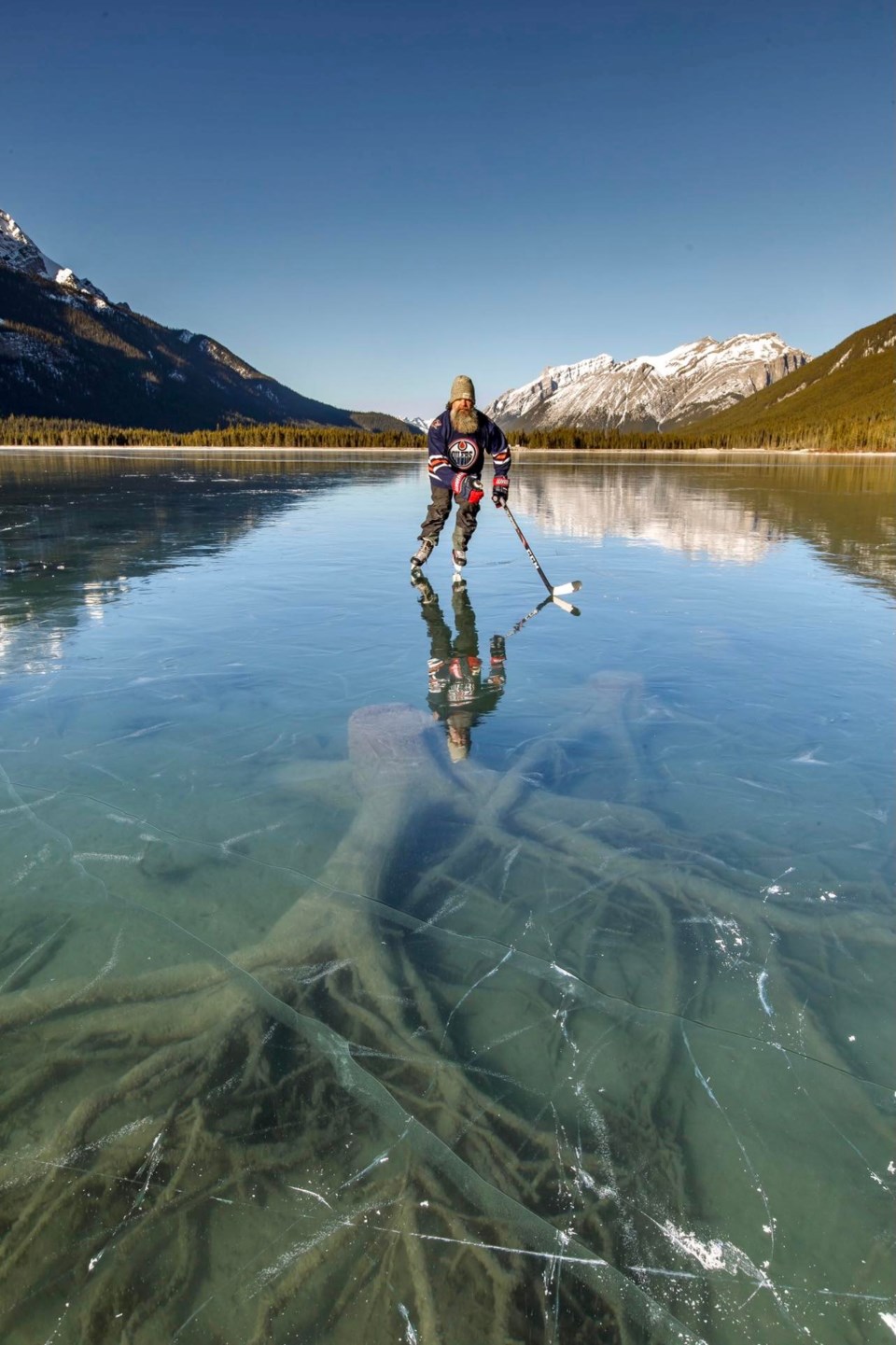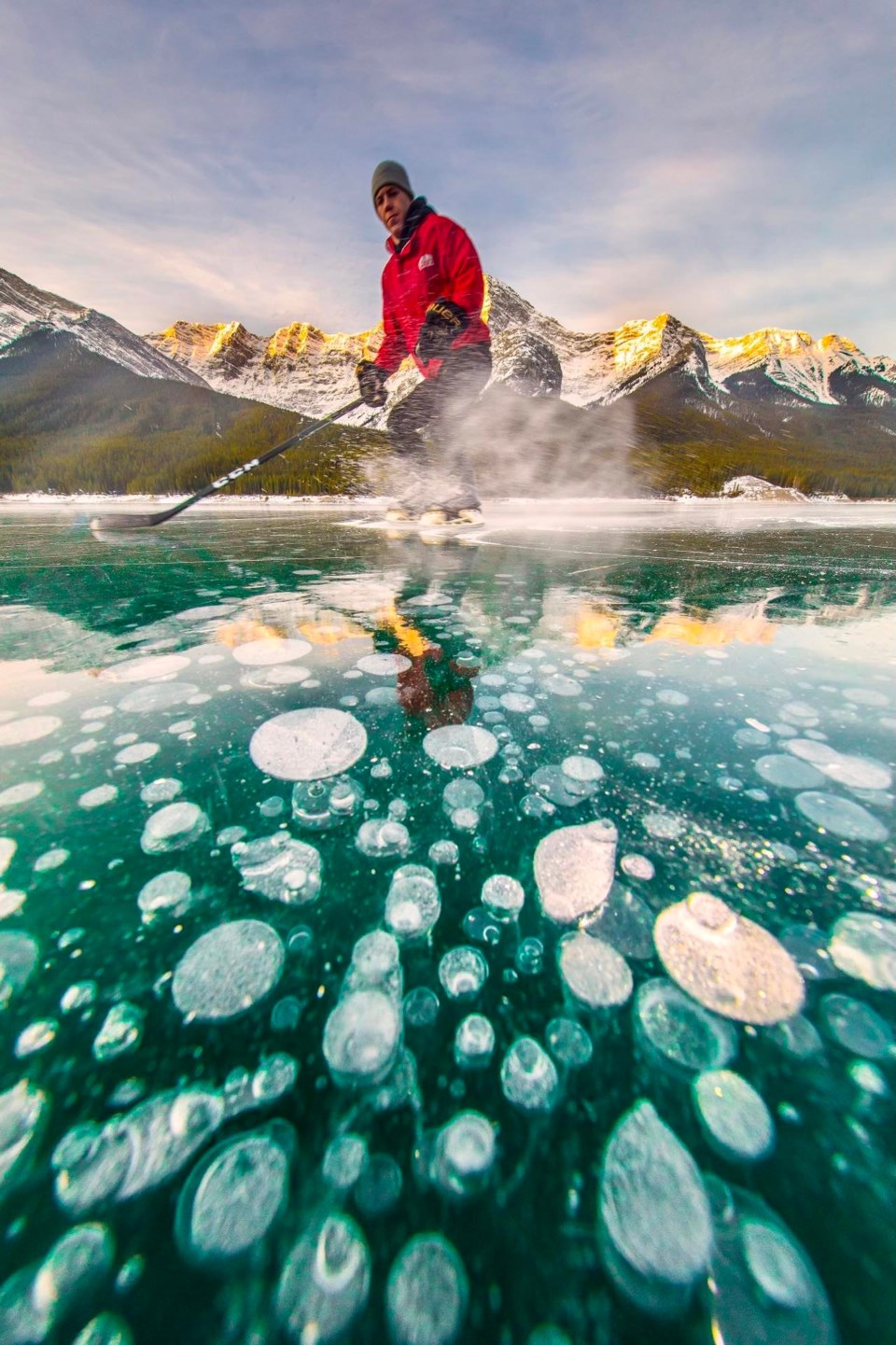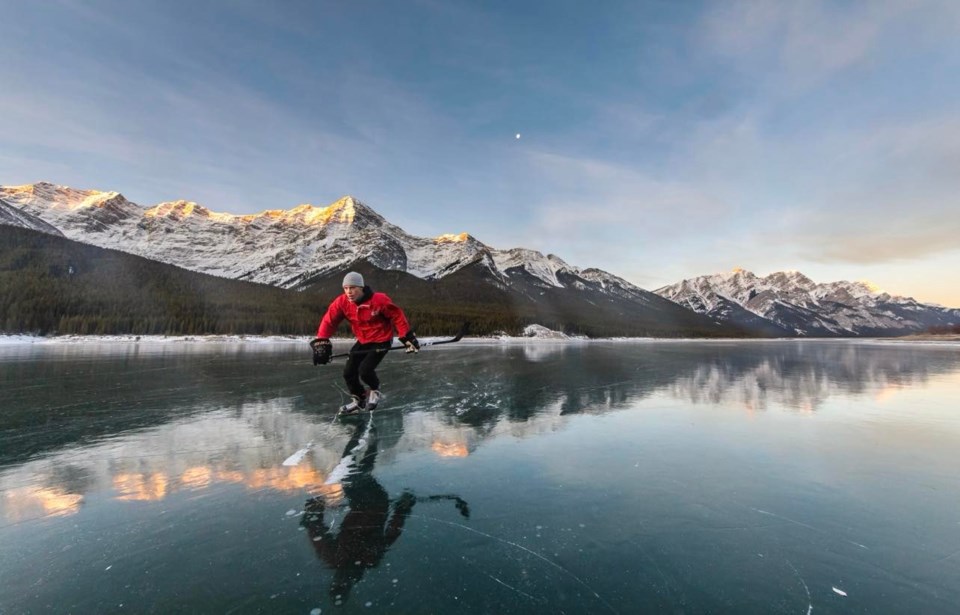As winter creeps in, many outdoor activities can be limited.
Shoulder season, as this time is dubbed, can make for tricky conditions for skiing, but it can sometimes be perfect for wild ice skating.
"It’s a really neat time of the year right now,” says Darren Vonk, Kananaskis Country Public Safety (KCPS) specialist. “When you get cold temperatures up on the Spray, you can throw a pair of skates on and you can go skate for 10, 20, 30 kilometres. You can spend the whole day skating, navigating around. It's just a really cool medium to travel on. However, it is sort of a short-lived season here in the Rockies.”
Although skating on wild ice – any ice not maintained – can be a memorable and relatively inexpensive sport, it can be very dangerous.
“Our biggest concern is the depth people are skating on and not having the correct gear,” says Vonk. “This time of year, when the ice is not as trustworthy, it is suggested to have some sort of prevention against hypothermia.
"You’ll see a lot of people wearing life jackets, helmets, and sometimes a drysuit. It's likely you might punch a foot through or catch a recently formed chunk of ice that has cracked. It's so easy to find yourself getting hurt on new ice, because of new hazards that are out there.”

Another useful piece of gear is the simple hockey stick.
“That can be a great option, especially to help someone who might have fallen in. If someone does fall into the ice, you can approach the hole on your belly. The reason for that is to distribute your weights and then you can pass them a stick or a rope, or any sort of reaching device.”
Yet, Vonk and KCPS urge skaters who are with someone who falls in to call 911 immediately, even if you think you can get the person out.
“When there is a party skating and someone does fall into the ice, call 911 immediately,” says Vonk. “You can help someone self extricate, but, get resources moving your way immediately. Water hypothermia is quick.”
Vonk can’t stress this enough and urges skaters not to feel stigma by calling.
“You can always stand rescue services down if you can get the person back to the car. Just call 911 back and say, ‘Hey, thank you. We got somebody out. We're transporting them to whatever home or the hospital.’ Dispatch will ask you some more questions, but getting those resources going, as opposed to trying to do a rescue and maybe somebody else falls in. Two people in the water – now it's a really big deal. So get rescue services going ASAP if someone does fall into the lake or into water.”
There are some simple indicators of thin ice that can help you decipher whether you are skating on thin ice.

WATCH FOR CRACKS
The different types of cracks can be indicative of the safety or the thickness and the ice that you're standing on.
Pay attention to the different kinds of cracks in the ice. Shooting cracks that are linear are not always indicative of the ice failing, it's typically just the pressure and the tension of the ice releasing, which is a good thing. It keeps it from shattering.
Circular cracks are a different story. If you're standing on the ice and you start noticing the cracks, circling around where you're standing, that's an indicator of the ice potentially breaking below your feet.
Another area to be cognizant of is along the shoreline. It can generally be a little bit weaker where the ice transitions from water. It often can be thin or just kind of broken or rotten. Also be aware of rocks, sticks, log jams or vegetation. Those areas can be weaker and potentially uneven. Anything sticking through the ice that might catch your skates sends you flying.
THICKNESS
Early in the season, some of our biggest hazards would be thin ice. Generally around three inches of ice or less is dangerous. It’s unpredictable. It might support your body weight, but there's no real security with it.
Around four inches or so is when we start to trust it a little bit more with activities like fishing or hiking, ice skating, and cross country skiing.
At the five-inch mark, you start to see small motorized vehicles, like quad snowmobiles on ice.
Then at eight inches or thicker, you'll start seeing vehicles. Out in the Ghost Reservoir, you’ll actually see full-sized vehicles do drifting courses and competitions.
COLOUR
The colour of the ice is important. That clear blue or green ice that you might see in the watercolours here in the mountains – that generally will equal a slightly safer ice, thicker, more pure ice. Whereas, with whiter ice, it might have snow and air inside of it. Ice that has formed during a big snowstorm or by the wind. That is going to be a more rotten style ice. So it's not going to be strong, and those are the simple visual clues to help pick the right spots.




